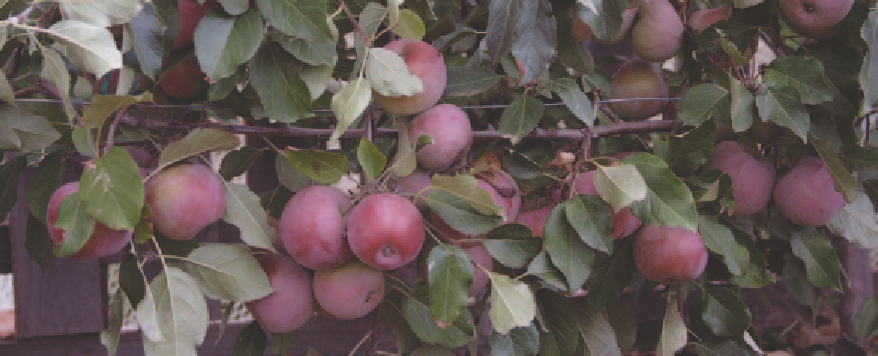Agriculture Reference
In-Depth Information
Figure 5.10
A really fine example of espalier.
(Photo courtesy David Glenn, www.lambley.com.au)
'To produce a tree that can be trained,
pruned, sprayed, psychoanalyzed, exhibited to
friends, fed, fondled and filched of its fruit
with the least possible expenditure of
perspiration and time.'
As these three branches produce new growth
in summer, select the two strongest well-
spaced shoots on the original branch to serve
as the next limbs. If they are very vigorous,
prune them lightly. If you wish them to
extend further without branching, leave them
alone and cut out any shoots surplus to
requirements (see Figure 5.9).
The art of espalier is possibly the most
sophisticated of all pruning and training
techniques. It takes a dedication and attention
to detail that requires the enthusiast; however,
as garden plots are ever decreasing, and the
desire to grow our own fruit and have some
semblance of self-reliance in food is ever
increasing, it is an art worth cultivating.
Repeat this process next summer when the
year-old shoots will produce another set of
shoots. Again select two and prune out the
rest. This forms the basic framework for a
classic five to six limbed tree. Branch angles
from the trunk should be no less than 65°.
The branches will eventually take on a
weeping shape as the fruit weighs down the
new growth (see individual entries, pages
143-179, for how to manage specific fruit
trees and long-term maintenance pruning).
Espalier is a method of pruning that allows
the gardener to produce the maximum
amount of fruit in a restricted space (see
Figure 5.10). They are easy to pick from, easy
to prune and easy to net for birds.
It is the pruning style for gardeners of the 21st
century - and it really isn't that difficult.
Espalier-treesinsmallspaces
To quote Alan Edmunds, to grow an espalier
is:
It has been said that the definition of
espalier is as loose as the designs are formal.

